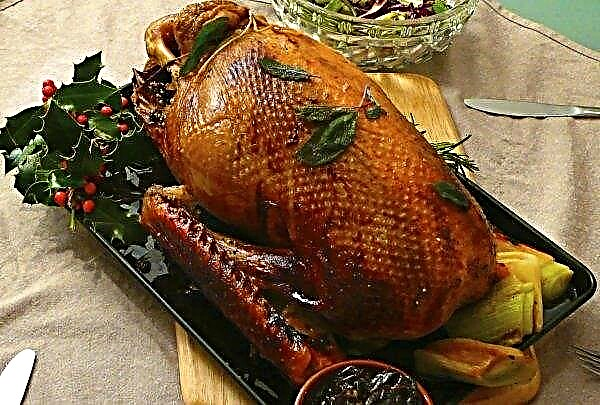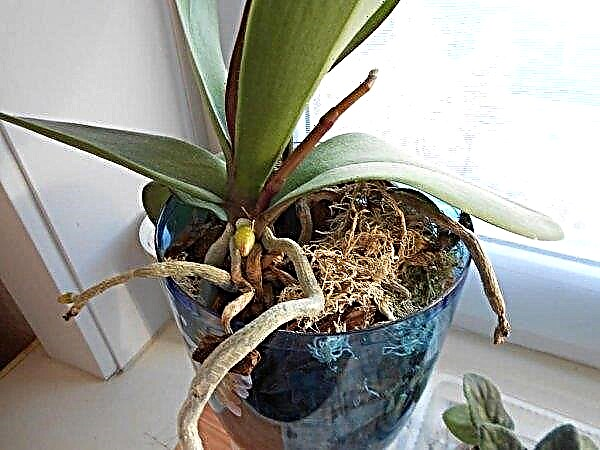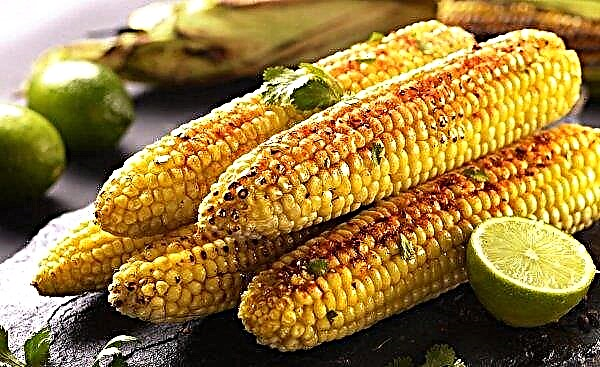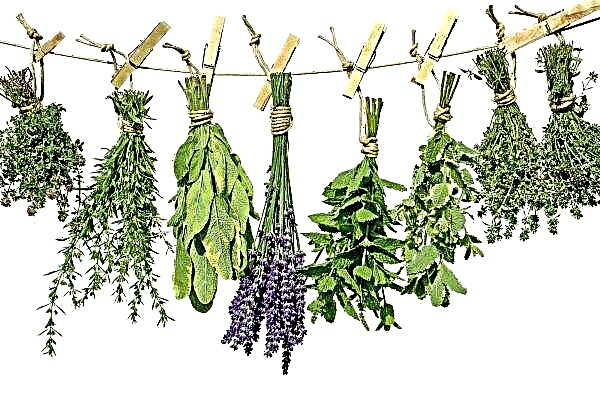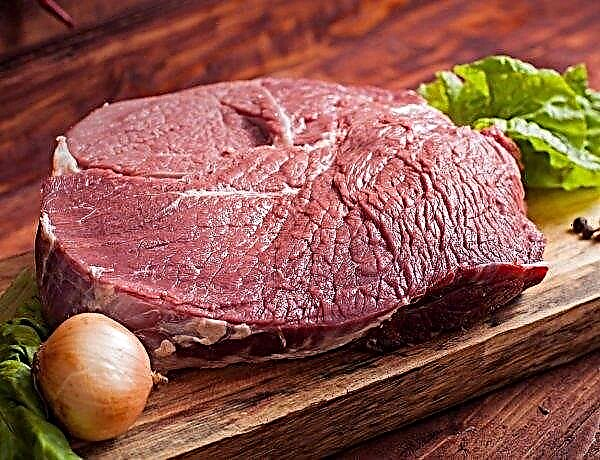Each gardener seeks to grow crops as quickly as possible. The ripening periods of root crops directly depend on the selected variety, planting dates and subsequent care of the plants. Let us consider in more detail how these factors affect the potato vegetation.
How much potatoes grow on average from planting to harvesting?
Counting from sowing to full maturity, the growing period ranges from 1.5 to 4 months. The biological feature of the plant is that its aerial part and tubers do not grow simultaneously. Initially, 10–20 days after planting, seedlings appear.
Sprouted potatoes sprout 6–10 days earlier. Before flowering begins another 27–48 days. At this time, green mass is growing and tubers are being laid. Then the root crop should grow another 26–45 days to maximum maturity. Harvesting begins after the tops have dried and the skin of the tubers is roughened.Important! After the death of the tops, it is not recommended to delay harvesting for longer than 2-3 weeks due to the threat of diseases and the deterioration of the keeping quality of the crop.
Factors affecting potato ripening time
Weather conditions significantly affect the formation of culture. Rainy weather provokes damage to plants by late blight, and when the heat is too high, root crops stop growing. But such damage can be minimized, and the yield can be accelerated if the cultivation technology is followed.
Potatoes can be grown according to different technologies, namely:
Grade
How many days a potato will need to go through all phases of development depends on the choice of variety. In this case, you need to consider for what purpose it will be used.
The early varieties, which are very popular, rarely give a high yield, and its safety is lower due to the insufficient dry matter content. Commercial cultivation is a big advantage, as well as getting two crops a year in the southern regions and the possibility of cultivation in the northern.
Middle and late groups of varieties, although they do not make it possible to quickly eat young potatoes, have the best flavoring properties, have the highest yield and are able to withstand winter storage.
Depending on the growing season, the following classification is used:
- early potatoes ripening in 50–65 days;
- precocious ready for harvesting on the 65–85th day;
- mid-season can be dug up after 85–95 days;
- medium-late ripens in 95–110 days;
- late harvested 110 or more days after planting.
Important! Potatoes grown in the same area begin to degenerate over time, so varieties should be changed every 2-3 years.
Growing region
Potatoes are planted in almost all regions, but the type and composition of the soil is not always suitable. Tubers are formed at the ends of underground shoots - stolons, so the plant needs loose, moist soil.

Due to the variety of climatic conditions and soil composition in different regions, zoned varieties have an advantage when choosing. Under optimal growing conditions, the highest yield, root crop quality and maximum disease resistance will be obtained.
Landing time
According to established tradition, the majority of the population plant potatoes in early May. But the orientation to the temperature of the soil, which should warm up to +8 ... + 10 ° С, which can happen in April, will also be more correct.
But if weather conditions do not allow, the desire to get the crop as early as possible can result in its complete loss or the need for re-planting. Later dates also do not guarantee success - planting in dry soil reduces productivity.Did you know? The spread of potatoes at the beginning of its appearance in Europe was carried out both by forced means and by cunning. The French agronomist Antoine-Auguste Parmantier set up a guard around his potato field during the day, which went out at night so that curious peasants could steal and plant a carefully guarded wonder plant.
You can choose the planting date using folk signs - according to the time between the flowering of bird cherry and the appearance of leaves in a birch.
Fertilizer application
Poor soil shortens potato growing season. The less nutrients in the earth, the faster the root crops ripen. But at the same time, you should not rely on a rich harvest.
The application of mineral and organic fertilizers lengthens the life cycle of the plant, during which the growth of tubers can continue until late autumn.
Moisture and air temperature
Hot, dry weather leads to accelerated ripening of root crops, especially if this occurs during flowering and the formation of tubers. In areas where the bushes lack sufficient watering, the tops turn yellow and dry by mid-summer. Harvest from such sites is insignificant and small.
How to accelerate the maturation of potatoes
The onset of harvesting dates does not always coincide with the end of the growing season of potato plantings. Digging up unripe root crops is not recommended, as they will receive more mechanical damage, will be unstable to diseases and will not be able to survive winter storage.

Only the onset of sudden early frosts can justify the collection of young potatoes, as the tops will begin to take nutrients from the tubers for recovery.
In more favorable cases, with a certain margin of time, maturation is accelerated in one of the following ways:
- Mowing tops. A week and a half before harvesting, the green stalks are mowed to a height of 10–20 cm. This is perceived by plants as a team to complete growth and the tubers begin to ripen.
- The use of desiccation. This is the use of chemicals - copper sulfate or magnesium chlorate for spraying potato bushes, after which leaves and stems quickly lose moisture and dry out.
- Senication - also a chemical method. Plants are sprayed with a solution of superphosphate, after which their growth slows down and the outflow of nutrients from the tops to tubers increases.
The use of such techniques makes it possible to minimize the number of mechanical damage to root crops and to obtain a high-quality crop in rainy summers or in lowlands.Did you know? Potato chips were invented in revenge by a visitor to one of the American restaurants who complained that the fries were cut too large. The cook fried him potatoes, chopped as thinly as possible.
Harvest Features
Harvesting potatoes, separately by grades, is carried out in dry sunny weather, but not too early - when morning frosts pass and the air temperature is set within +10 ... + 17 ° С. Seed material is selected from the most productive and healthy bushes. Dug up tubers are dried and sorted by size, discarding damaged and diseased. Root crops cut by a shovel can be left for drying and storage, and damaged by forks are taken away for processing. The remains of the tops and weeds must be collected and burned to prevent the development of diseases and soil contamination.
Dug up tubers are dried and sorted by size, discarding damaged and diseased. Root crops cut by a shovel can be left for drying and storage, and damaged by forks are taken away for processing. The remains of the tops and weeds must be collected and burned to prevent the development of diseases and soil contamination.
Dried and sorted potatoes are transported for storage in prepared and disinfected dark rooms with air temperatures up to + 3 ° C and humidity up to 80%, while ensuring natural ventilation.
Did you know? Potato has unique compatibility with other products. The number of first, second courses and desserts that are prepared from these root crops reaches two thousand.
Matured and healthy tubers of early varieties with timely harvesting and proper storage will easily preserve quality and nutrients until November, and late potatoes will successfully winter without losing taste and benefit.






